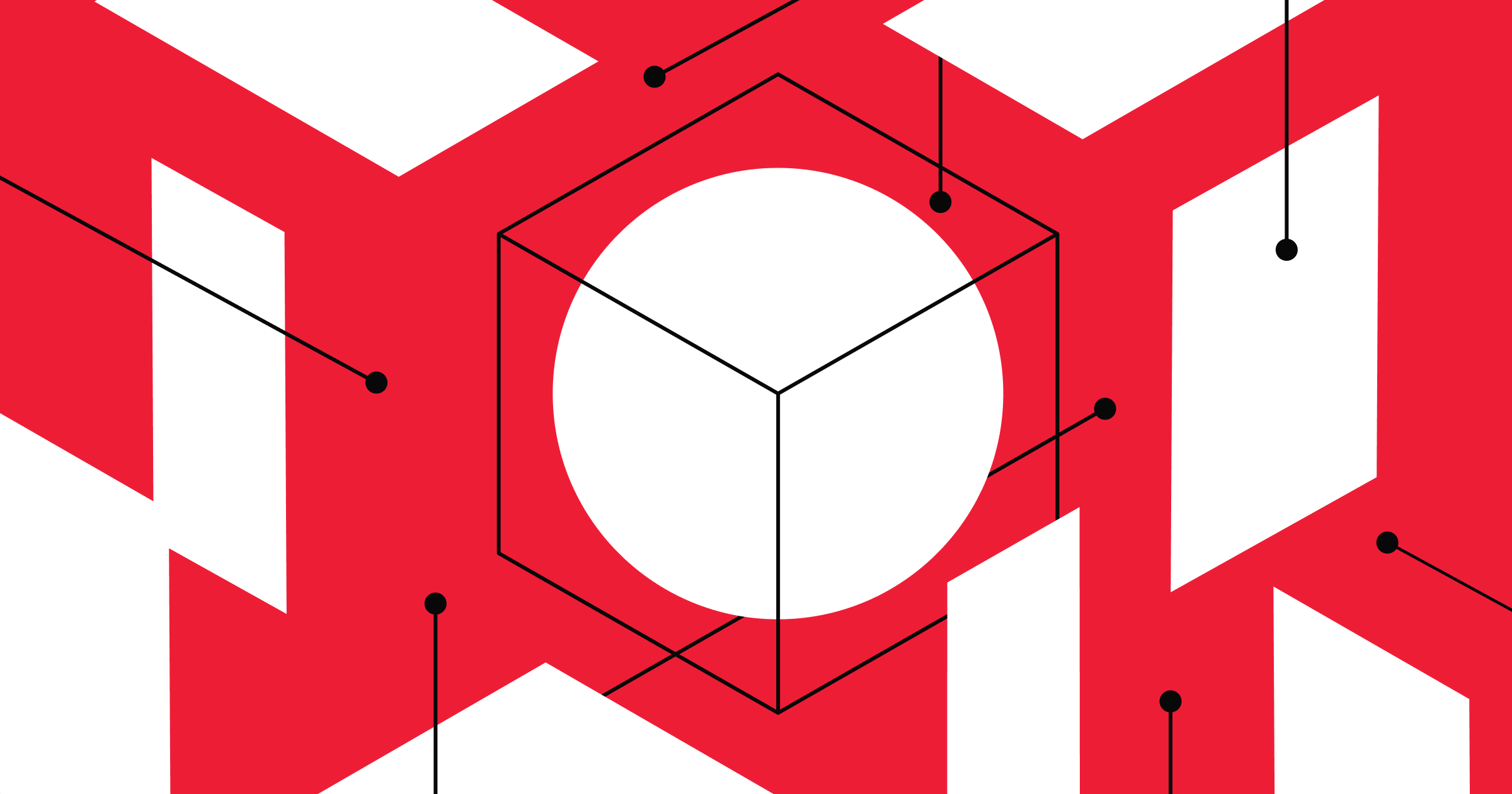Choosing the right group structure is essential to assemble the best possible software development team.
Software development for websites and web apps involves much more than the technical expertise required to write it. Your project’s success hinges on errorless code but needs a visually stunning layout, compelling content, and airtight management to keep it all on track.
Optimizing work protocols to create excellent products and services relies on the collective strengths of marketers, designers, and project managers. Team members must excel in their roles, collaborate well, and complement each other’s skills and work styles. Without this cohesion, you risk communication issues and protocol hiccups that could negatively affect your product’s performance. Learn why your organization’s success ties directly to the effectiveness of your software development team structure.
The importance of the right software development team structure
Building a strong software development team starts with hiring for specific roles — like a front-end developer, back-end developer, product manager, designer, and user experience (UX) engineer. Otherwise, your roster of talent is likely to fall short in certain areas.
For example, excluding quality assurance (QA) specialists from your team could lead to a product riddled with unchecked bugs despite the hard work of developers, marketers, and designers. This oversight delivers a subpar product, which frustrates users, damages your brand’s reputation, and incurs extra resources for post-launch fixes.
To sidestep such pitfalls, design your team structure to meet your project’s demands. Then, select the right people to fill these roles for a high-performing team that’s efficient, collaborates well, and adapts to changing project requirements.
Beyond role-specific expertise, team members need to possess interpersonal and communication skills to truly benefit group efforts. The right candidates not only possess the technical abilities required for their roles, but also understand the value of teamwork, clear communication, and shared objectives.
Below, we’ll dive into some key software development roles, common types of structures, and tips for arranging the ideal team for your organization.
Key software development team roles
Some project management practices, like the Agile methodology (more on this below), designate specialized jobs like solution architects, scrum leaders, and product owners.
However, there are a few fundamental team roles needed across various structures to ensure project success. The following positions are the building blocks of any effective software development team.
Software developer (front-end and back-end)
These software engineers provide the highest technical expertise to your project.
Front-end developers focus on building the user-facing aspects of a software application, such as navigation and user interface. They implement the design team’s work to shape your site’s look and feel.
Back-end developers, on the other hand, work behind the scenes. They manage databases, servers, and your site’s core functionality. This entails ensuring the software runs seamlessly and serves data on request.
Both developer roles are integral to the development process and bring life to the code that drives the software’s functionality.
Project manager
A project manager is responsible for the overall software development management. They’re the guiding force that ensures your project stays on course and are responsible for setting clear objectives, managing timelines, allocating resources, and overseeing the entire development process. Project managers also foster effective communication within your team to keep operations running smoothly.
UI and UX designers
User interface (UI) designers focus on crafting an aesthetically pleasing website interface, and user experience (UX) designers ensure that the interface is user-friendly and intuitive.
UI designers are responsible for elements of the visual hierarchy, like layout, color schemes, and graphics, to make your web platform visually appealing. UX designers handle the overall user experience to ensure your website is intuitive.
Together, UI and UX designers create an interface that looks great and offers a satisfying user experience.
Quality assurance engineer
Quality assurance engineers are responsible for testing for software quality. They rigorously test the code behind your site to identify and resolve bugs and errors. The QA role is essential for ensuring the software’s reliability and ability to meet user expectations.
Systems architect
A systems architect (or software architect) takes a high-level view of the product by designing its overall structure and verifying that all its components work in sync. These team members make critical decisions about the software’s architecture, data flow, and integration of various systems. Their role is pivotal in ensuring your service’s scalability, efficiency, and long-term stability.
DevOps engineer
A DevOps engineer bridges the gap between software development and information technology (IT) operations. They focus on automating and streamlining the software development and deployment process to make procedures more efficient and reliable.
Historically, DevOps engineers have managed the deployment pipeline. Now, with innovations like infrastructure-as-a-service (IaaS) providers, DevOps is shifting to a continuous integration/continuous deployment (CI/CD) model that implements automated regression testing as part of its practice.
This model automatically makes concurrent codebase changes and employs faster, more frequent updates across your webpages. CI/CD eliminates the need for a large team of QA engineers because the development process includes writing tests and the deployment pipeline builds in testing.



















Reimagining web development teams
In our ebook, learn how visual development enables strong cross-team collaboration and frees up precious developer resources.
Common types of development team structures
There’s no one-size-fits-all approach to team structure. The right choice for your organization depends on specific project needs and your company culture. Let’s explore some common development team structures and how they can benefit your operations.
Triad
The triad structure is a classic model involving a trio of core roles: a front-end developer, a back-end developer, and a designer. This arrangement fosters close-knit collaboration between the three key players and aligns user-facing elements with the platform’s technical operations.
A triad is ideal for smaller projects or startups, where efficiency and quick decision-making are key, as it eliminates more complicated communication and processes you might see with a larger team. It’s a lean approach that encourages cross-functional collaboration to rapidly produce results.
Generalist
A generalist development team structure relies on versatility, with each team member wearing multiple hats. For instance, a software engineer might take on full-stack developer (front-end and back-end developer) responsibilities. They may cover web design responsibilities as well.
This approach works for projects with limited resources in a fast-paced development environment as it reduces the required number of employees. It also capitalizes on team members’ adaptability and diverse contributions to different aspects of the project. Generalist teams thrive in situations where agility is essential and excel at maintaining a balance between functionality and aesthetics.
Specialist
A specialist team structure involves team members who each bring expertise to a distinct area of your project, like front-end or back-end development, UI or UX design, or QA.
Specialist teams work best for larger projects where in-depth proficiency is required. This structure supports hyperfocus on each development aspect and encourages autonomy in individual players.
Hybrid
A hybrid team strikes a balance between the adaptability of a generalist structure and the precision of a specialist structure. This model empowers team members to tackle a wide range of tasks while maintaining high-quality standards. Individuals will assume core responsibilities in areas of their specific expertise (as they would in a specialist structure), but they’ll also lend their skills to other development components as needed and available (as in a generalist structure).
This is an excellent choice for projects that demand versatility without sacrificing precise skill sets and suits a vast range of product development strategies.
Agile
The Agile team structure implements the Lean approach for software teams. Agile software development thrives on adaptability and iteration, making it an excellent choice for projects with rapidly evolving requirements or especially dynamic market conditions.
Key roles within an Agile team include:
- Scrum leaders facilitate the Agile process and promote teamwork and problem-solving.
- Product owners bridge the gap between external players (such as customers and investors) and the development team to make critical decisions based on user needs and market demands.
- Solution architects design the software’s structure and integrate components for scalability and long-term stability.
4 best practices when building a software development team
A cohesive software development team is efficient, productive, and innovative, and building one takes careful consideration. Here are some helpful tips for assembling your ideal team:
1. Select the right structure
Select a team formation that aligns with your project’s requirements and business needs rather than choosing based on an ideology. The model and key positions must match your project scope and support your objectives.
2. Embrace smaller subteams
Split large teams into focused subunits, as smaller teams promote efficiency and encourage close collaboration. Letting team members work tightly together helps them tackle specific aspects of the project with greater agility and effectiveness.
3. Foster team ownership
Empower your team by encouraging them to take ownership of their project duties. When team members have a personal stake in a product, they’re more motivated and committed to its success.
4. Balance your team
Create a team that’s well-ordered in terms of skill sets, experience, and role responsibilities. This entails allocating appropriate duties to individuals based on their abilities and choosing leaders capable of managing their reports. A well-balanced team ensures that all critical aspects of development — from coding to design — are adequately met.
Bring your development team together with Webflow
Webflow, a visual web development platform, empowers both technical and nontechnical web development team members to create stunning websites in one workspace. By facilitating a seamless transition from design to development, Webflow enables teams to take charge of their projects, collaborate smoothly, and transform ideas into reality.
Explore the possibilities of Webflow Enterprise to boost your team’s web development capabilities and take your projects to the next level.

Webflow Enterprise
Trusted by over 300,000 of the world’s leading brands, Webflow Enterprise empowers your team to visually build, manage, and optimize sophisticated web experiences at scale — all backed by enterprise-grade security.































